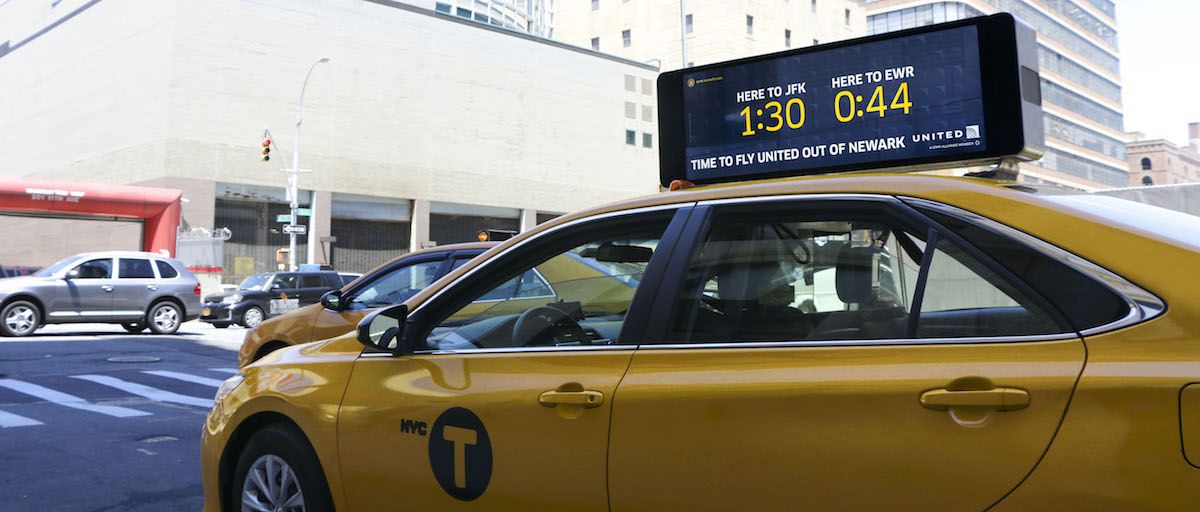For quite some time now, digital signage has been spreading throughout the public space with various engagement types at various locations. In the recent years, digital signage has expanded to yet another noteworthy spot in the field which is yielding promising results.
A commonly known fact is that vehicles eventually move away from bystanders. Therefore, logic would imply that whatever you mount on it would move away as well. Shocking. Traditional signs don’t cost that much to mount on a vehicle and then they are around for a minute or two, before moving along to the next possible spectator. So why would anyone want to invest in digital displays to do the same? Wouldn’t that be overkill?
We’re focusing on this question and pointing out the best advantages mounted digital signage has to offer.
First, let’s start with the basics.
Primary benefits of mounted digital signage
Digital signage is unique for every location and environment, that’s old news, so let’s take a look at which features of digital signage are ideal for mounted digital signage:
Attracting attention more successfully than traditional signage is a very evident advantage, and especially important in this setting where it’s only visible for a short amount of time.
The ability to rotate massive amounts of content on a display is important with the increased amount of exposure. Short campaigns keep the content interesting and also convey more information to the viewer, especially if the exposure is short in time.
Displaying content unique for the specific time of the day is a particularly useful feature, especially at night where it might be difficult to observe. Adapting campaigns for nighttime, or other specific moments of the day with specific content guarantee the message fits the attention.
Displaying content based on the location of the vehicle ensures specific content is delivered at a specific location which can be a great plus if you’re doing campaigns which direct people to the closest store, for instance.
With these main characteristics of mobile digital signage out of the way, let’s get more specific and see more possibilities vehicle mounted digital signage provides.
What’s the ideal vehicle for mounted digital signage?
Let’s start from the very beginning and highlight the ideal option when it comes to the best carrier for mounted digital signage.
Taxis, public transit buses, shuttles, and even company vehicles can be the ideal carriers of digital signage as they cover a lot of distance and gain equally much exposure. Mounting your own company vehicles — if they travel a lot for delivery or any other reason — is a great choice, but otherwise, it is recommended to stick to taxis and buses since they’ll certainly get around more than any of your vehicles do in a day.
Vehicle mounted digital signage can also be used in a different setting. For example, trucks and trailers are also potential hosts for vehicle mounted digital signage.
Bret Pawlowski, founder and CEO of Brands in Motion, a mobile fleet of trucks and trailers with mounted LED displays, says the content presented on vehicular dynamic media is extremely eye-catching. These vehicle mounted digital displays are great for festivals, concerts and similar events which goes to show that not only public transportation vehicles can be good vehicle mounted digital signage carriers.
Mounted signage means higher traffic exposure
The main asset of vehicle mounted signage, both traditional and digital is its mobility. With typical digital displays, relocating is not an option, especially with larger mediums like digital billboards. Vehicle mounted digital signage basically means displays-on-wheels.
Vehicle mounted digital signage promises to bring your content vast exposure all across the city and instead of bringing the viewer to your display, the display comes to the viewer.
The content must be unique
A unique platform demands unique content. Keep in mind that due to the vehicle being in motion, there are certain content types which won’t do the trick on vehicle mounted digital signage.
For example, interactive content is not a wise choice.
Obviously you can’t expect people to climb vehicles to interact with the display, but even the more distant way of interaction through codes and mobile isn’t recommended. Not unless you’re creating a lightning fast campaign which takes 10 seconds of interaction to complete. Otherwise, the display will practically run away from the user before they actually manage to do anything relevant with it.
You have the green light for creative campaigns
As with any other unique environment, digital signage unlocks the possibility to create fun and creative campaigns which will peak the interest of your target audience.
Take United Airlines for example. While their customer service might be “mildly” aggressive if you refuse to vacate your seat, their OOH campaigns are on point!
Last year, United Airlines launched a campaign on New York taxicab toppers aiming to debunk the myth that taking a cab from the city to the JFK airport is faster than travelling to sneered at Newark Airport across the river in New Jersey. Using GPS software, the ad toppers showed a real-time comparison of travel times between the city and the two airports.
You can check out more details on that particular story if you like, but this is a great example of how you can use vehicle mounted digital signage to create a unique campaign people will talk about.
Is vehicle mounted digital signage the future?
Very commonly seen in larger cities today, taxicabs mounted with digital displays are just the beginning. Public transit busses and trains which commonly include static signs both inside the vehicle and mounted on the outside, are switching to the more dynamic features digital signage provides.
The future will certainly include more displays on more vehicles, maybe eventually even the more authoritative institutions such as fire department, police and ambulance vehicles will join this movement — obviously not for advertising but potentially for public safety announcements.
It’s safe to say that this application of digital signage is going to stick around and most likely improve over the years.
At the beginning perhaps viewed as a trend which provoked quite an exciting response from those who saw it, vehicle mounted digital signage is already a very common thing to see in larger cities and will certainly spread and become commonplace beyond them.










